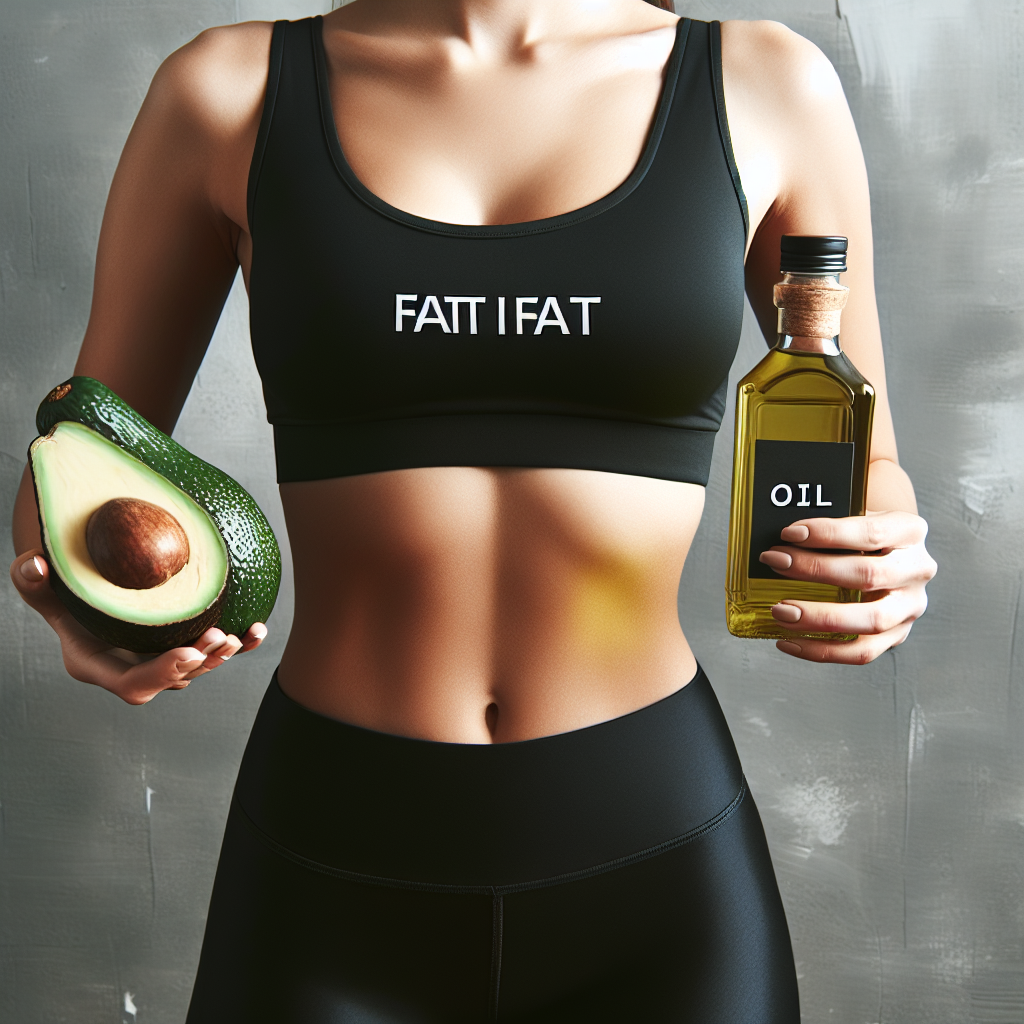Ensuring Healthy Fat Intake: Sophie’s Goal
“Ensuring Healthy Fat Intake: Sophie’s Goal” unveils the perspective of Sophie, a health-oriented individual driven by a widely misunderstood yet crucial aspect of nutrition: fat intake. Sophie’s body fat percentage rests at 30%, which situates her within the healthy range for body fat. Despite misconceptions surrounding fat, embodying topics such as animal fat consumption to visual representations equating specific weights to fat, the article seeks to elucidate the true essence of it. It pursues inquiries such as the function of fat in the human body, its significance, and the differentiating components in fat and other nutritional elements. Drawing upon notable debates related to body fat, including societal conversations rarely held concerning fat, the piece also looks to guide readers in distinguishing factual information from uncorroborated beliefs. The narrative renders a holistic overview of the subject matter in a manner that’s both enlightening and empathetic, anchoring on Sophie’s personal journey and continuing efforts towards maintaining a healthy fat intake.

Understanding Fat and its Significance in The Body
Defining Fat and its Roles
Fat, also referred to as Adipose tissue, is a critical component in the human body. Its primary function is serving as an energy storage site. When the body requires additional fuel, it converts fat into usable energy. Besides, fat also insulates the body, providing protection from cold and acting as a shock absorber to safeguard organs against external impacts.
The Difference Between Essential Body Fat and Storage Body Fat
There are two types of body fat: essential body fat and storage body fat. Essential body fat is fundamental for life and proper physiological functioning. It is found in the bone marrow, heart, lungs, liver, spleen, kidneys, intestines, muscles, and lipid-rich tissues throughout the body. In contrast, storage body fat is accumulated when excess calories are ingested. It is the type of fat we commonly know, and it is associated with weight gain and obesity when in excess.
Understanding the Concept of Total Body Fat
Total body fat is the sum of essential body fat and storage body fat. A healthy body fat range for women is 25% to 32%, while for men it’s 15% to 24%. This percentage can vary based on individual health circumstances, fitness level, and age.
Sophie’s Body Fat Percentage
Sophie’s Total Body Fat Calculation
Our case study, Sophie, has a total body fat percentage of 30%. This figure falls within the healthy range for women, indicating a balanced fat distribution and a balanced diet. It’s essential to remember, though, that maintaining a body fat percentage within the healthy range requires continuous attention towards diet and exercise.
The Health Implications of Sophie’s Body Fat Percentage
At 30%, Sophie’s body fat percentage places her in a healthy position associated with a reduced risk of illnesses such as diabetes, heart diseases, and other obesity-related conditions. However, should her percentage rise above the healthy range, she may find herself at increased risk. Conversely, falling below can also lead to health predicaments such as nutrient deficiencies, hormonal imbalance, and osteoporosis.
Comparing Sophie’s Body Fat Percentage with the Ideal Range
As previously mentioned, Sophie’s body fat percentage of 30% aligns well within the ideal range for women. It is commendable as it suggests balanced nutrition and adequate physical activity. Hence, it highlights the importance of maintaining these levels to preserve health and prevent diseases.
Importance of Fat Soluble Vitamins
Identifying Fat Soluble Vitamins
The fat-soluble vitamins are vitamins A, D, E, and K. These vitamins are stored in the body’s fat tissues and the liver and are essential for proper body function.
Understanding the Role of Fat Soluble Vitamins in the Body
Fat-soluble vitamins play various roles in maintaining overall health. Vitamin A, for instance, improves vision, immune function, and cell growth. Vitamin D aids in the absorption of calcium for healthy bones. Vitamin E is an antioxidant protecting cells from damage, and Vitamin K promotes blood clotting and bone health.
Identifying Non Fat-Soluble Vitamins and their Role
On the flip side, non-fat soluble vitamins, also known as water-soluble vitamins, include vitamin C and the B complex vitamins. These vitamins are not stored in significant amounts in the body and should be included daily in the diet. Vitamin C aids in wound healing and iron absorption, while B vitamins are critical for energy production and nerve function.

Weight Loss Fads and Misconceptions
Busting Myths about Body Fat
Many misconceptions surround body fat, including the idea that all fat is detrimental to health. The reality is that certain fats are essential for optimal bodily function. Furthermore, while excessive body fat can be harmful, maintaining a healthy body fat percentage is necessary for protecting organs, storing energy, and performing a host of other vital functions.
The Truth About Losing Fat
In the context of weight loss, losing fat does not mean that one must completely eradicate fat from their diet. Instead, it involves reducing excessive storage fat while maintaining, or even increasing, essential fat. This balance is achieved through healthy dietary habits and consistent physical activity.
Role of Exercise in Fat Loss: Squats and Belly Fat Reduction
Squats are an effective workout for reducing belly fat. They are a compound exercise that works multiple muscles simultaneously, leading to an increase in calorie burn and consequently aiding in fat loss. However, targeting fat loss in one specific spot, like the belly, is a common misconception.
Visualising Fat Loss
What Does Lost Weight Actually Look Like?
Weight loss primarily shows as decreased body size and improved muscle definition. However, the scale does not necessarily reflect fat loss as its readings include muscle and water weight.
Visualising What One Pound of Fat Looks Like
If you’re wondering what a pound of fat looks like, imagine a block of butter. That’s approximately what one pound of fat represents. This visualization aids in appreciating even small victories in weight loss.
What Does 20, 30, 40 or 100 Pounds of Fat Look Like?
To provide some perspective, imagine 20 to 100 blocks of butter. That’s what 20, 30, 40 or 100 pounds of fat resemble, respectively.
Healthy Fat Intake and Its Impact on Weight
How Much Fat Should One Eat for Healthy Weight
Fats should occupy roughly 20-35% of daily caloric intake. However, these figures should be filled with nutritious, unsaturated fats like avocados, nuts, seeds, and olive oil rather than harmful, saturated fats such as those found in fried food and red meat.
The Impact of Fat Consumption on Body Fat Percentage
Unsurprisingly, fat consumption can affect body fat percentage. Overeating fats, especially unhealthy ones, can lead to weight gain and an increase in body fat percentage.
Case Study: Sophie’s Fat Intake and Its Impact on Her Body Fat
Sophie’s healthy body fat percentage of 30% suggests moderate and balanced fat intake. It showcases how responsible eating, combined with regular physical activity, can maintain a healthy body fat percentage.
Healthy Fats vs Unhealthy Fats
Differentiating Between Healthy Fats and Unhealthy Fats
Healthy fats are typically unsaturated fats found in foods like avocados, nuts, seeds, and olive oil. Meanwhile, unhealthy fats are usually saturated and are present in foods like red meat and fried food.
Why Powerlifters Consume Certain Types of Fats
Powerlifters often focus on consuming healthy fats as they provide long-lasting energy which is essential for their rigorous training routines.
The Healthiest Fats to Utilize in Cooking, like in Sautéing Chicken
For cooking, especially in sautéing chicken, healthy fats like olive oil would be an ideal choice. Olive oil not only enhances the flavor but also keeps your heart health in check while supplying your body with necessary fats.
Ensuring Healthy Fat Intake: Sophie’s Goal
Sophie’s Adoption of a Healthy Fat Eating Plan
Sophie can maintain her healthy body fat percentage by adhering to an eating plan that includes recommended portions of healthy fats. She must also check for these in her regular foods to avoid overconsumption.
How Sophie Can Monitor and Maintain her Body Fat Percentage
To monitor and maintain her body fat percent, Sophie needs to balance both her food intake and physical activity. Regular exercise and a balanced diet filled with nutrient-dense foods will help keep her body fat in the healthy range.
The Impact of Sophie’s Healthy Fat Intake on her Overall Health
Sophie’s healthy fat intake provides her with sufficient energy, optimal brain function, and helped her reach a healthy body fat percentage. In turn, this reduces her risk of chronic diseases and contributes to healthy aging.
Body Fat and Body Image
Challenging Body Fat Stigma and Fat Shaming
It’s crucial to challenge the stigmatizing and fat-shaming culture that often associates body fat with laziness or a lack of control. Body fat is a normal part of human physiology, and maintaining a healthy amount is essential for overall health.
Understanding the Emotional Impact of Body Fat Perception
The perception of body fat can have a significant emotional impact, often leading to a damaging focus on appearance rather than health. It’s essential to shift towards understanding body fat’s physiological role and celebrate our bodies for their resilience and strength.
Insights from ‘Fit to Fat to Fit’ and ‘My Big Fat Gypsy Wedding’
Shows like ‘Fit to Fat to Fit’ and ‘My Big Fat Gypsy Wedding’ provide insights into the complexity of body fat and body image. They highlight the journey, the emotional struggle, and the victory associated with managing body fat.
Fat Consumption and Other Factors in Weight Management
The Interplay Between Fat Consumption, Exercise, and Metabolism
Maintaining a healthy body fat percentage involves not only monitoring fat consumption but also engaging in regular physical activity and maintaining a healthy metabolism. These elements work together to maintain overall health and wellbeing.
Relevance of Proteins and Carbohydrates in Fat Management
While fats are essential, proteins and carbohydrates also play a substantial role in body fat management. Proteins help build and repair body tissues, and carbohydrates provide energy. Consuming a balanced mix of these macronutrients aids fat management.
Boosting Fat Loss through Healthy Lifestyle Choices
Healthy lifestyle choices are key to achieving and maintaining a healthy body fat percentage. This includes adequate sleep, regular physical activity, balanced nutrition, and stress management. These elements, combined with healthy fat intake, contribute to overall health and wellbeing.

